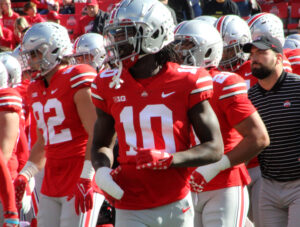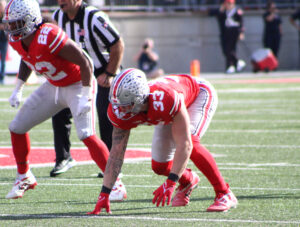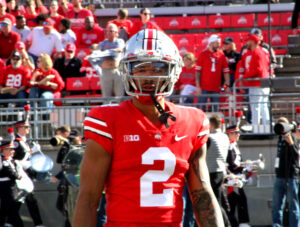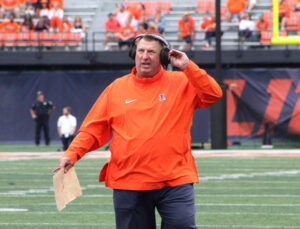Ranking the first-year Power Five Coaches
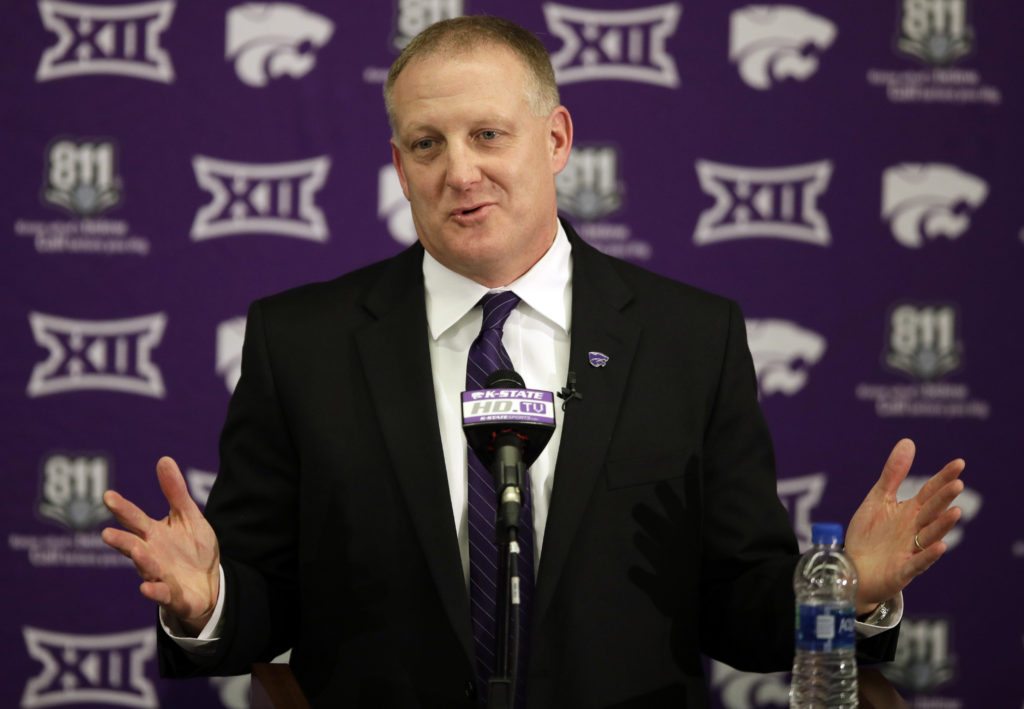
FILE - In this Dec. 12, 2018, file photo, new Kansas State NCAA college football head coach Chris Klieman speaks at his introductory press conference in Manhattan, Kan. Kansas coach Les Miles and Kansas State counterpart Chris Klieman wrap up their initial recruiting classes, both having hit the ground running in their new gigs. (AP Photo/Orlin Wagner, File)
Every coach comes into a different situation when they take over a program. Some inherit a roster full of talent, while others take over a team with the cupboard bare. The hardest challenge is getting the players to buy into the new culture. However, with great leadership, chemistry with the players and an emphasis on x’s and o’s the first season can be rewarding and a smooth transition.
11. Geoff Collins, Georgia Tech: Everyone knew it was going to be a rough first season for the Yellow Jackets, transitioning from the triple option to an offense that favors the pass. Starting off 1-5, including a home loss to FCS opponent the Citadel wasn’t pretty by any means. Losing the first three ACC games didn’t help Collins cause either. However, the Yellow Jackets have won two conference games, including a victory over NC State last week under the lights. Clean Ol’ Fashioned Hate rivalry is up next for Georgia Tech at home. The Yellow Jackets will likely suffer their worst blowout loss of the season, considering the Bulldogs need style points to stay ahead of Alabama in the Playoff rankings.
10. Mike Locksley, Maryland: The Terrapins won their first two games of the season and had a promising start, but it went downhill from there. Maryland’s offense has been completely abysmal and the team lost eight of their last nine games. Everything is starting to resemble Locksley’s horrendous tenure at New Mexico. Locksley’s predecessor D.J. Durkin didn’t leave the cupboard bare, but the talent on the field hasn’t showed. Maryland’s only conference win was against bottom-feeder Rutgers, arguably the worst team in the Power Five. A coach should never be judged in his first year, but it remains to be seen if Locksley is ready for Big Ten football.
9. Matt Wells, Texas Tech: The Air Raid offense has left the building, but the Red Raiders still have found ways to put points on the board. Poor defense plagued the Red Raiders throughout the season and the team allowed 30 or more points in eight of their 12 games. However, Texas Tech did win two conference games on the road, which is a step in the right direction. The program just suffered a fourth-straight losing season and Wells will likely need a couple of solid recruiting classes to see positive results on the field.
8. Les Miles, Kansas: The Hat return to the Big 12 has been tough sledding, although the Jayhawks have shown improvement. Kansas has two victories over Power Five opponents and been competitive in half of its’ games. However, Kansas still hasn’t won a conference game on the road since the 2008 season. Miles will need more consistency out of the offense in order for the Jayhawks to take that next step.The team hosts a Baylor team that will be looking to make a statement before playing in the Big 12 Championship. It might not show up in the win-loss column, but Miles has exceeded expectations in year one on the job.
7. Manny Diaz, Miami: The Miami native has had a roller coaster season during his first year on the job thus far. Offense continues to be a major issue for the program, but the Hurricanes’ defense has stayed a solid unit. That shouldn’t come as a surprise considering Diaz is a defensive-minded coach. Diaz knows the Miami area like the back of his hand and recruiting is taking shape. The loss to little brother Florida International was embarrassing, but Miami will likely take out that frustrating defeat on Duke in the regular season finale. Regardless, the Hurricanes have a winning conference record and will be going to a bowl game this season.
6. Neil Brown, West Virginia: Judging from Brown’s press conference at Big 12 Media Days, he expected his first season to rough. The Mountaineers suffered through a five-game losing streak, but won two of their last three games to end the season. Finishing 5-7 doesn’t look as bad when you consider Dana Holgorsen did leave the cupboard bare and West Virginia was transitioning from an offensive-minded to a defensive-minded coach. The Mountaineers’ offense is going to need some major work in the off season if Brown hopes to make improvements in year two. Still, winning three conference games on the road, including the regular season finale provided momentum and shows Brown has the team headed in the right direction.
5. Mel Tucker, Colorado: He took over a mentally fractured team that was coming off a seven-game losing streak to end 2018. Tucker had the ideal start, winning three of his first four games. However, suffering through a five-game losing streak started to resemble last year’s late season debacle. Still, the Buffaloes got it all turned around and won their last two games. Tucker emphasized mental toughness and Colorado has showed it has gained a lot under his leadership. Now comes the biggest game of the season against an elite Utah team on the road. Colorado must somehow pull off the upset to become bowl-eligible on the season, but just to be in this position speaks volumes of where Tucker has the program.
4. Mack Brown, North Carolina: Another coach that got off to a fast start, but everything went downhill from there. Brown keeps the Tar Heels competitive and his team has lost some heart breakers this season. Almost upsetting Clemson proves Brown still has his coaching edge and he continues to be a great game day motivator. Brown has already equaled the amount of wins in his year on the job that the program has had over the past two seasons combined. A win over rival NC State will have North Carolina bowl eligible, which speaks volumes of the coaching job Brown in doing in Chapel Hill.
3. Scott Satterfield, Louisville: He probably has had the most success in terms of wins and losses. The Cardinals went from being a two-win team last season, to potentially winning eight games. Not to mention Louisville didn’t win a single conference game last year, but has won five in Satterfield’s first season and will finish with a winning ACC record. Louisville is headed to a bowl game and Satterfield has had the quickest turnaround of any coach on this list. At this points it’s safe to say Louisville is the second-best team in the Atlantic Division. Enough said.
2. Chris Kleiman, Kansas State: The Wildcats won their first three games of the year, made a couple of appearances in the AP top-25 and could potentially finish the regular season with eight victories. Kansas State has scored 30 or more points in six of its’ seven wins and handed Oklahoma its’ only loss of the year. The Wildcats’ defense has struggled as of late, but Kleiman keeps the team competitive in every game. The regular season finale at home against Iowa State will be a great measuring stick of where Kleiman has his team and he’s laying down a great foundation in Manhattan.
1. Ryan Day: Ohio State: In hindsight it seems Day has the team in better shape than Urban Meyer did. The Justin Fields transfer has worked out to perfection and the Buckeyes are arguably the nation’s No. 1 team. Ohio State continues to blow out its’ opponents and been cruising through the Big Ten. All of the Buckeyes’ victories have been by double-digits and it seems the best is yet to come. Day will be judged on how Ohio State fares on the road against Michigan, but he’s definitely up to the challenge. As of now the Big Ten is Ohio State and everyone else and Day is just getting started. No one will probably know how good the Buckeyes truly are until the Playoffs, but there’s no denying they are the most complete team in the Power Five.

